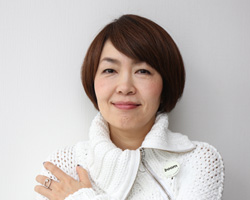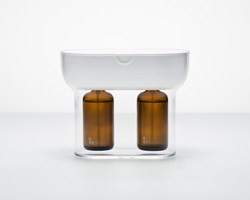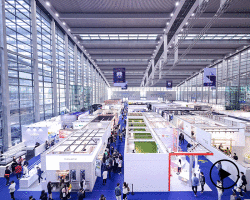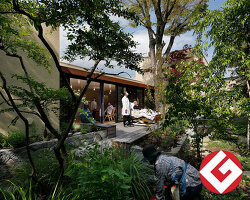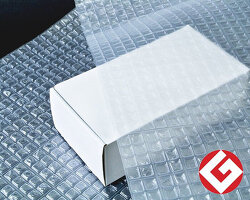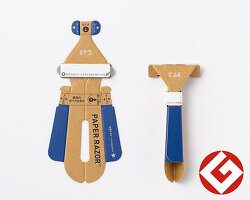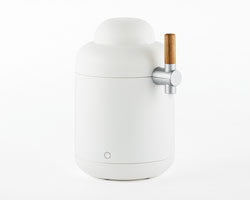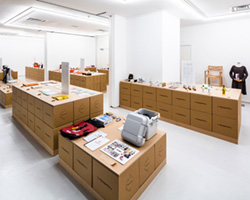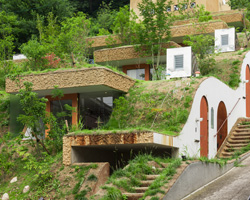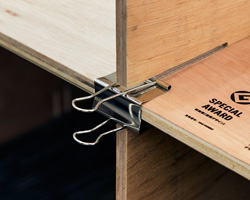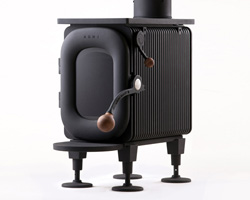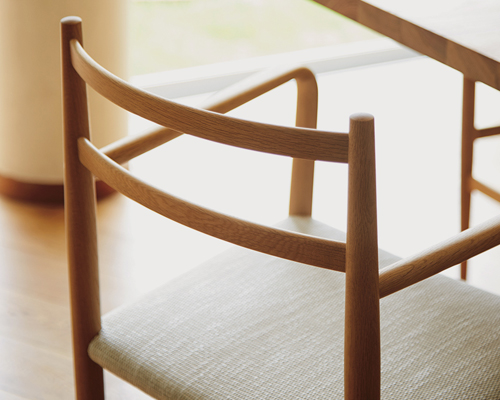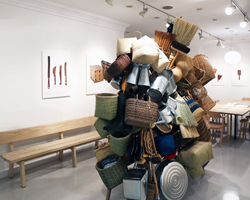
the g-mark japan GOOD DESIGN award ceremony, held during tokyo design week, honors outstanding projects in the fields of architecture and product design. designboom spoke with japan GOOD DESIGN award chairman kazufumi nagai and vice chairman fumie shibata about the judging process, some of the winning ideas, and this year’s special focus on world-awareness.
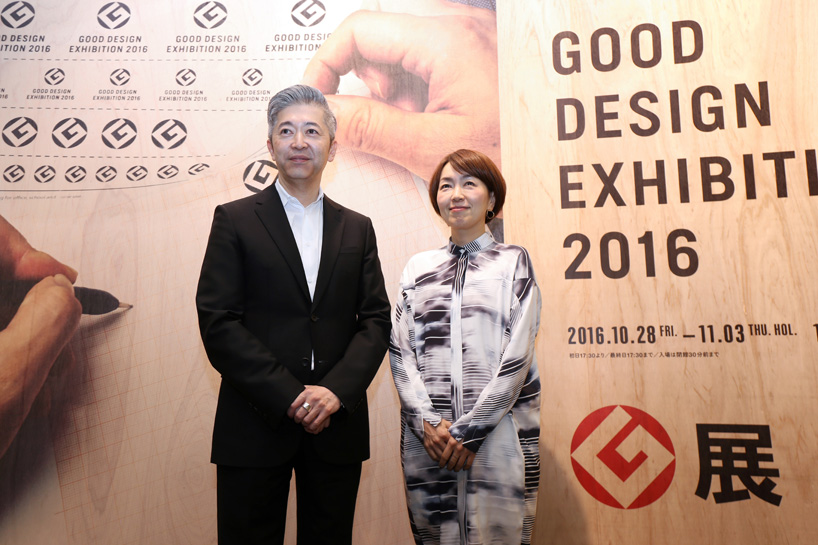
kazufumi nagai and fumie shibata at the GOOD DESIGN exhibition 2016 in tokyo midtown
image © designboom
designboom (DB): how did you determine this year’s GOOD DESIGN grand prix award ?
chairman kazufumi nagai (KN): we’ve adopted the ‘focused issues’ system, which considers an object, not only in terms of itself, but also in regards to its awareness of the issues behind it, particularly what role it would play in society. this is the second year we’re working with this concept, and I think it has been received well. six projects have been chosen as finalists for the grand prix of the GOOD DESIGN award 2016, and each of them have an important core theme. the grand award — chosen for its contemporary relevance, concept, aesthetics, and symbolism — is given to the year’s best design. each recipient’s work, chosen by an esteemed jury, portrays the value of good design that improves the quality of life within society. the 2016 winner was ‘authagraph’, a world map designed by hajime narukawa that aims to correct the counter distorted land and sea sizes and political and geographical misunderstandings.
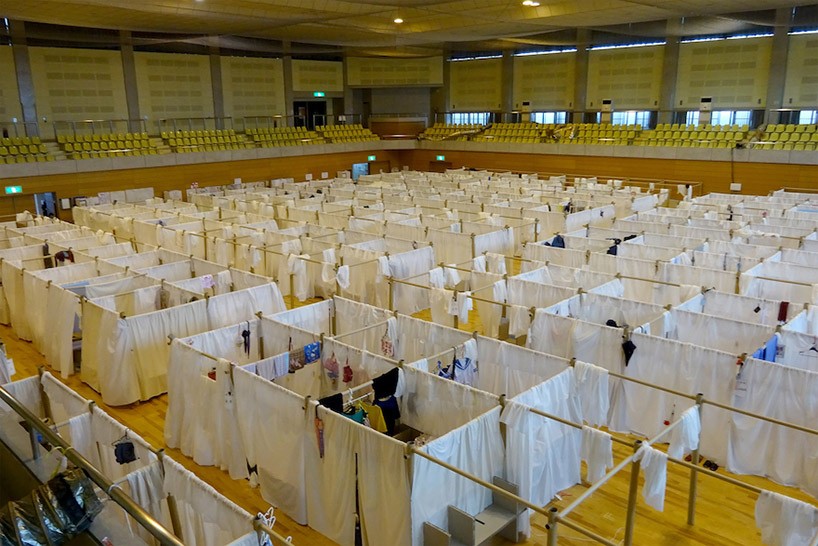
(above) gold award for the paper partition system by shigeru ban (in use after earthquake in kumamoto, japan)
(main) kazufumi nagai, chairman of the japan GOOD DESIGN award 2016 | image © designboom
vice chairman fumie shibata (FS): first of all, the GOOD DESIGN award entries are very different, there is a broad range of projects. ‘authagraph’ at a glance, does not seems to be a ‘design’ product, however, it shows us a new japanese design phase.
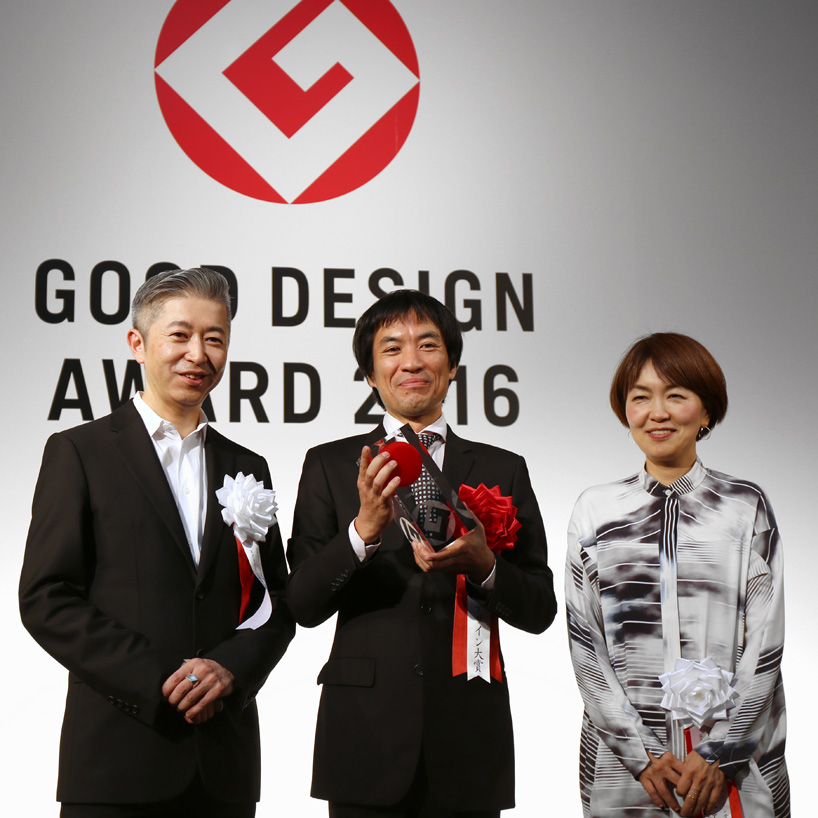
kazufumi nagai, hajime narukawa (grand prix winner for ‘authagraph’ — see below), + fumie shibata
image © designboom
DB: ‘authagraph’ is a way to ‘draw the world’, rather than a map. it is not a product (to sell). how do you think this object could be promoted commercially?
FS: I have just realized that this is not a product! (laughs).
KN: in 2005, the hypodermic needle for diabetes won the grand prix. in that moment, we discussed if this ultra-fine needle was design or not. however after winning the grand prix, this has been promoted and communicated well across the world. as the map designer says, the project includes an element that is not so easy to understand. by saying he draws attention to the fact that ‘how we perceive the world is also design’. actually, this project expands the range of design applications. for that reason, I think this year’s grand prix is very effective.
FS: it is important to communicate the full potential of design, rather than to only plan a product’s business success. this year’s grand prix has shown a new role of design.
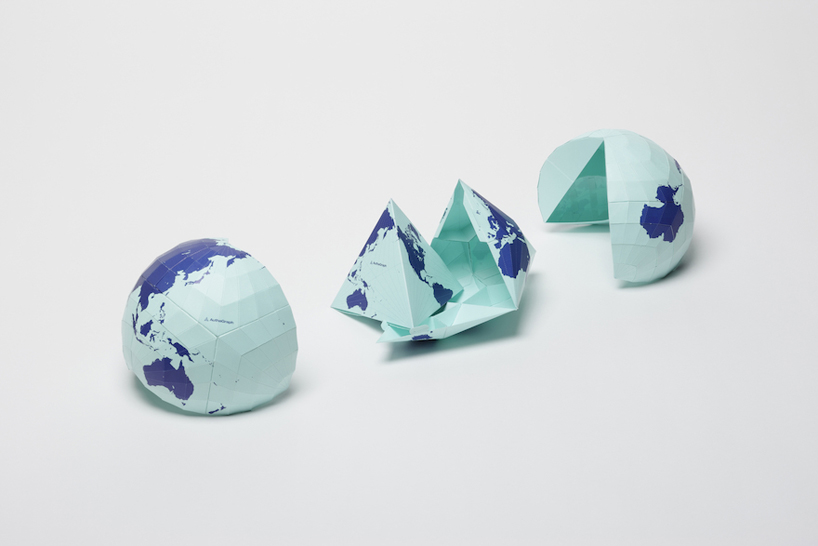
‘authagraph’ by hajime narukawa, winnner of the 2016 japan GOOD DESIGN grand award
read more about the project on designboom
KN: when new design ideas are born, those who have invented them are usually young people.
FS: the remarkable thing this year was that there were more projects which try to resolve a problem within a team. I think that perhaps young people are good at doing that. there was a time, when a design project was given only to an acclaimed and experienced super-designer. today a variety of specialists work on projects together. I think that young people have contributed to this development.

dentsu’s jack-o’-lantern trash bags, winner of the g-mark japan GOOD DESIGN award
read more about the project on designboom
DB: many young designers have been awarded this year. did you intend to highlight young japanese creatives?
KN: when we judge projects, we usually do not know who has designed them. this year, many of the chosen projects have been designed by young designers. every year we try to pick up fresh designs or designs that we have never seen before. in these last few years, judges are also trying to alternate generations, as we are the oldest (laughs). the judges themselves are actually designers and can see the entered projects from a ‘maker’ point of view.
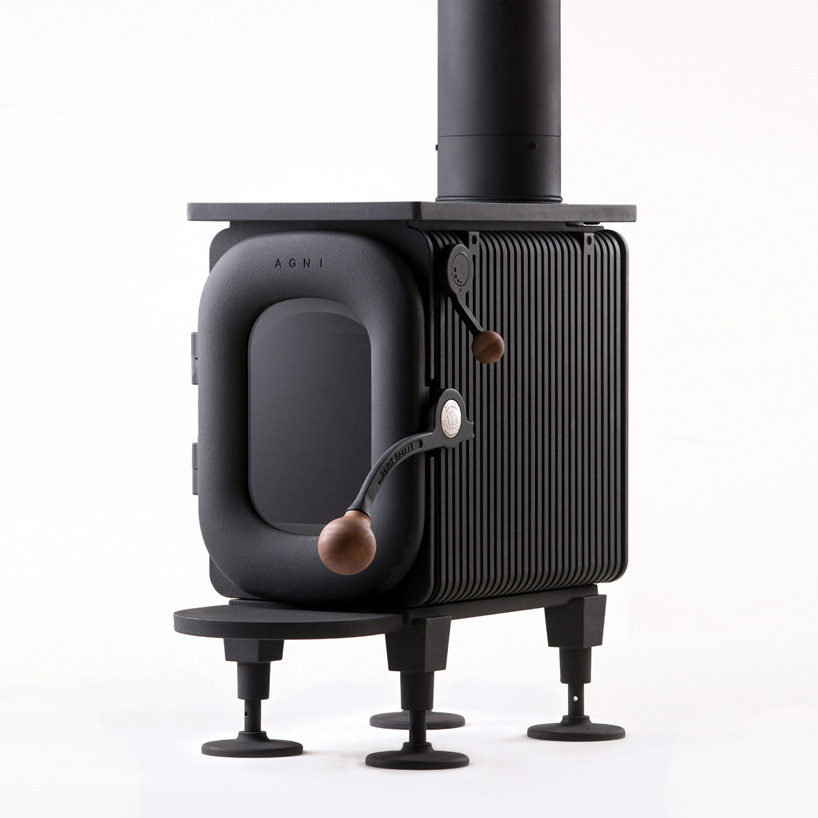
okamoto’s AGNI hutte wood stove, winner of the g-mark japan GOOD DESIGN award
read more about the project on designboom
DB: a recent trend is that some of the traditional japanese producers involve also international designers, if we look for example at the work of creative director teruhiro yanagihara’s arita-yaki project, you notice that this concept is part of the company’s identity now. can you please elaborate on this?
FS: those kinds of collaborations have already existed before, and today, I think young people engage even more naturally. many western designers appreciate japanese goods and when visiting japan, they bring a lot of products abroad. I think the respect comes from the maturity of the japanese design world. in japan we look at western developments too, the curatorial work by yanagihara for the japanese company arita mixes the different design approaches and languages.
KN: japanese in-house designers used to only play a limited role in the creation of a product. today designers are more and more interested in participating in the entire process of product development and this is what is most interesting to observe. especially young western designers are trying to make a sort of ‘endemic thing’ by multiplying a designer’s philosophy with japanese craft heritage.

snow peak’s sky nest text, winner of the g-mark japan GOOD DESIGN award
read more about the project on designboom
DB: design reflects the state of society, so when society changes, design indicates it. japanese and international societies are different, do you think that japanese and international design is different too?
FS: I think playing with the idea of adding a new design element to otherwise ‘normal’ commodities and investigating an object without limits is the main characteristic of japanese design. the way that japan resolves a problem may be common to other asian countries. for example, the hoshinotani-danchi project seems to be a typical japanese thing, but you can apply this case to other asian countries. while it seems to be focused only for japan, it might be a valuable thing anywhere in the world. hoshinotani-danchi once served as company housing for employees of the odakyu electric railway company, but has been converted to rental apartments and public facilities. located in a former suburban residential area, it truly revitalizes the community (in the face of population decline). among the social initiatives are a café, childcare center, dog run, and a public vegetable garden. perhaps less apparent but no less exciting, is the return of the ‘sounds’ of a viable community, of people chatting, children laughing, of life itself.
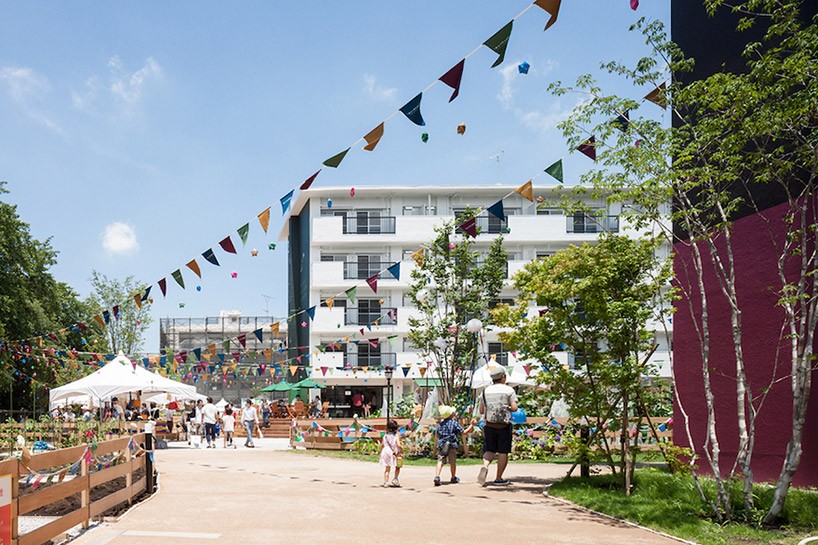
hoshinotani-danchi apartment renovations
DB: previous chairman naoto fukasawa said (half-jokingly) that the most important role for a chairman is to conclude an argument?
KN: the GOOD DESIGN award will evolve if each chairman adopts a ‘new’ system. for example, fukasawa introduced the ‘best 100’ category, I have added the ‘focused issues’ which categorize projects by their theme and their relationship to society. before, there was a only vertical categorization — like vehicles, kitchen, furniture, architecture… and to judge these ‘focused issues’ I have selected experienced judges to join the process. during the jury process, we were exhausted because of all the discussions around the various entries and a sense of satisfaction was gained. we try to work as facilitators, that is what a chairman does.
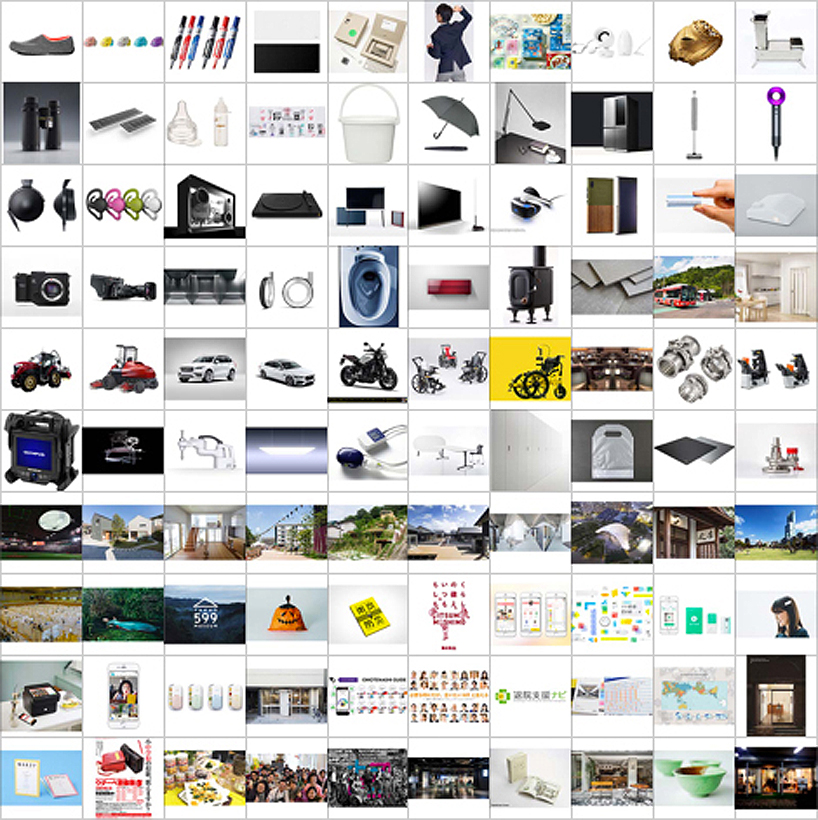
japan GOOD DESIGN award best 100 projects

japan GOOD DESIGN award 2016 gold award projects

the GOOD DESIGN award was founded in 1957 by the japanese ministry of international trade and industry and is hosted by the japan institute for design promotion. the ‘g mark’ emblem reflects comprehensive design values and principles that aim to enrich lives, industries and society.
Save
Save
Save
Save
fumie shibata (6)
g-mark japan GOOD DESIGN award (60)
g-mark japan GOOD DESIGN award 2016 (10)
tokyo design week 2016 (10)
PRODUCT LIBRARY
a diverse digital database that acts as a valuable guide in gaining insight and information about a product directly from the manufacturer, and serves as a rich reference point in developing a project or scheme.
